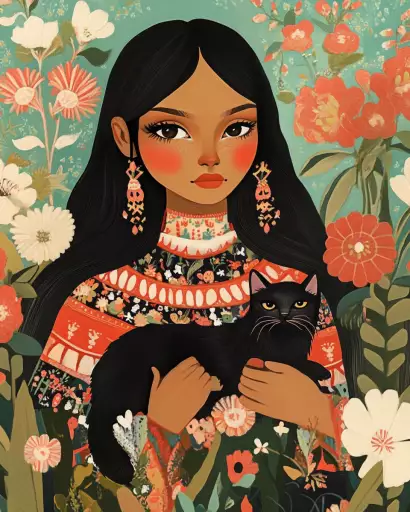Explore the Best AI Image Gallery

AI: The New Creative Collaborator in Graphic Design
The world of graphic design is experiencing a seismic shift, driven by the rapid advancements in artificial intelligence (AI). No longer confined to science fiction, AI is becoming an integral part of the creative process, offering exciting possibilities while raising important ethical considerations. This blog post delves into the impact of AI on graphic design, exploring its potential uses, benefits, and challenges.
Automating the Mundane: Efficiency & Productivity
One of the most immediate impacts of AI in graphic design is its ability to automate repetitive tasks. Imagine software that can automatically resize images for different platforms, generate basic layouts, or even create variations of a logo with slight modifications. This frees up designers to focus on higher-level creative tasks, such as concept development, strategic thinking, and client interaction.
Beyond Automation: AI as a Creative Spark
AIs influence extends beyond mere automation. Generative algorithms can now produce original designs based on user input or existing styles. This opens up a realm of possibilities for designers seeking inspiration or exploring new visual concepts. Imagine an AI tool that generates unique illustrations, typography variations, or even entire website layouts based on your brief.
Personalized Design Experiences
AI can also be leveraged to create personalized design experiences. By analyzing user data and preferences, AI algorithms can generate customized designs for marketing materials, websites, or even product packaging. This level of personalization enhances engagement and resonates more deeply with target audiences.
Ethical Considerations: Bias & Ownership
While the potential benefits are undeniable, its crucial to address the ethical implications of using AI in graphic design. One concern is bias in AI algorithms, which can perpetuate existing societal stereotypes or discrimination if not carefully addressed. Its essential to ensure that AI tools are trained on diverse and representative datasets to minimize bias. Another consideration is ownership and intellectual property rights. When an AI generates a design, who owns the copyright? These are complex questions that require careful consideration and ongoing dialogue.
The Future of Design: Collaboration & Co-Creation
Looking ahead, the future of graphic design likely lies in a collaborative partnership between humans and AI. AI will continue to automate tasks and provide creative suggestions, while designers will leverage their human intuition, critical thinking, and emotional intelligence to guide the process and ensure ethical considerations are met. This co-creation model has the potential to unlock unprecedented levels of creativity and innovation.
Key Takeaways
- AI is transforming graphic design by automating tasks, generating novel ideas, and enabling personalized experiences.
- It’s crucial to address ethical concerns such as bias in algorithms and intellectual property rights.
- The future of design lies in a collaborative partnership between humans and AI, leveraging the strengths of both.


















](https://images.ai-img.art/thumbnails/150/c2c9c48b38fae37f0a457b80b084ed01ba803810fc8f488c8f610c03abc74049.webp)


](https://images.ai-img.art/thumbnails/150/f67d9af3398150f2ab1bcf250717fea134275e2ca896252b54a4d9bb3719f9ac.webp)


](https://images.ai-img.art/thumbnails/150/bddf3ae4a232290858389b933c866ad3be429ef2e25c23a9f4d7713ed6e44d0b.webp)


](https://images.ai-img.art/thumbnails/150/4289d1230b86a96c4d556636c3167bed0ef38f850826549517e4e45db4d87bf7.webp)

](https://images.ai-img.art/thumbnails/150/008b5d5d49667cc2e93a5f8a8adfaa545963da99c39ff0901f5296294636400d.webp)








](https://images.ai-img.art/thumbnails/150/f9584153b4cddd8c9fab611dc10247549b275c59bc173251e37d0935874f9deb.webp)


